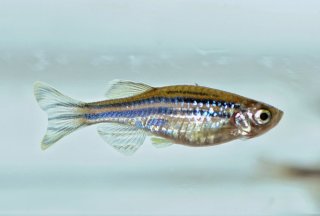Evaluating the Effects of Chemicals on Nervous System Development

Why are we researching this?
About 1 in 6 children in the United States are affected by a neurodevelopmental disability such as a lower IQ, learning deficits, and abnormal behavior such as hyperactivity or autism (CDC, 2018). Exposure to toxic chemicals during early life may produce adverse effects on the nervous system throughout life. Since environmental contaminants can affect children differently than adults, EPA is conducting research to identify chemicals that have the potential to contribute to neurodevelopmental disorders and understand child-specific vulnerabilities.
Why is this important?
The developing nervous system can be particularly sensitive to exposure to environmental chemicals. As a result of slow and expensive testing, less than 1% of chemicals in the environment have been evaluated for their potential to cause developmental neurotoxicity, or the impact of the chemical on the developing nervous system. In the absence of these critical data, it is not possible to understand the extent or potential contribution of environmental chemicals in neurodevelopmental disease, nor predict the potential developmental neurotoxicity risk for individual chemicals.
What is EPA doing?
EPA is developing new approach methods, or techniques used to provide data or information for regulatory decision making, to evaluate thousands of chemicals for developmental neurotoxicity hazard. These methods involve cell (in vitro), computational (in silico), or chemical (in chemico) evaluation based techniques.

High-Throughput Screening
EPA scientists are growing neural cells in their laboratories. These cells mimic important processes of brain development and can be used to screen and prioritize thousands of chemicals that have not been evaluated for developmental neurotoxicity hazard. For example, one model allows examination of how chemicals might alter the connections between neurons (synaptogenesis), while another measures possible effects on formation of functional networks of neurons. Visit our webpage on chemical evaluation and characterization to learn more.
Virtual Tissue Models

Computational methods are used to create virtual tissue models that can simulate how chemicals may affect human development. In early brain development, a specialized barrier forms to regulate the passage of hormones and nutrients to and from brain, called the blood-brain barrier. EPA scientists are using human cells and computer-based procedures to construct a virtual fetal blood-brain barrier and look at how neural brain cells grow and interact, to evaluate potential for developmental neurotoxicity during this sensitive time frame. See our page on virtual and complex tissue modeling for more information.
Alternative Animal Models

EPA scientists are investigating the potential of chemicals to cause developmental neurotoxicity by testing chemicals in developing zebrafish instead of using rats. Zebrafish are valuable for studying genetic and other determinants of nervous system development. Scientists treat the fish with the chemical during brain development and then assess if changes in the behavior of the young fish occur. Find more information about toxicity screening using zebrafish in this presentation.
Adverse Outcome Pathways (AOPs)

Adverse outcome pathways are frameworks that assemble knowledge about biological events that can be used to help interpret how a stressor (e.g. a chemical) can lead to an adverse health effect in an organism. EPA scientists are starting to use these powerful tools to organize data from in vitro and higher throughput methods, coupled with existing biological data and information from animal tests, to predict changes in biological pathways and the potential effects of chemicals on the developing nervous system. Learn more about EPA's AOP research efforts.
Recent Publications
- Toward a better testing paradigm for developmental neurotoxicity: OECD efforts and regulatory considerations
- Using zebrafish to assess developmental neurotoxicity
- Evaluation of in vitro New Approach Methodologies for developmental neurotoxicity
- Evaluation of Per- and Polyfluoroalkyl Substances (PFAS) In Vitro Toxicity Testing for Developmental Neurotoxicity
-
Case Study: Integration of toxicodynamic and toxicokinetic New Approach Methods
